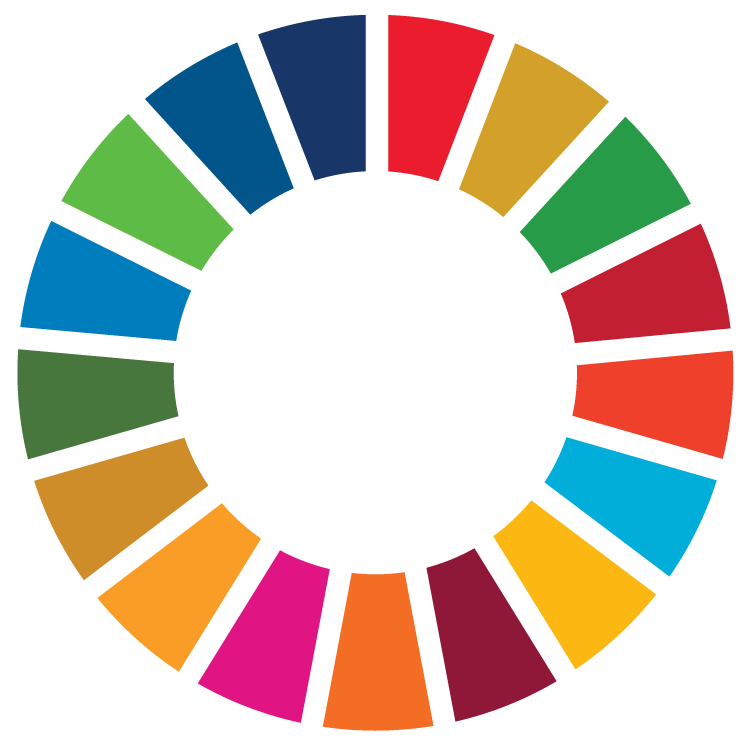
Text traduït
Aquesta assignatura s'imparteix en espanyol. El pla docent en català és una traducció de l'espanyol.
La traducció al català està desactualitzada.
Consulta preferentment el text original!
Si ho prefereixes, consulta la traducció!
Texto original
Esta asignatura se imparte en español. El texto original de este plan docente es en español.
Text created with automatic translation
The language of instruction of this subject is Spanish. The course guide in English is an automatic translation of the version in Spanish.
Automatic translation may contain errors and gaps. Refer to it as non-binding orientation only!
Perhaps you should consult the original version of the text!
Course
Advertising and Public Relations
Subject
Media Relations
Type
Compulsory (CO)
Academic year
3
Credits
6.0
Semester
1st
| Group | Language of instruction | Teachers |
|---|---|---|
| G15, classroom instruction, afternoons | Spanish | Julio Manuel Panizo Alonso |
| Nahuel Faedo |
Sustainable Development Goals (SDG)

- 5. Gender equality
- 10. Reduced inequalities
- 12. Responsible consumption and production
- 16. Peace, justice and strong institutions
Objectives
This course allows students to learn the keys to the relationship between companies and the media, whether from the communications department of a company or from an agency.
The main objective is to master the use of techniques that allow organizations to obtain good treatment from the media, understanding the perspective, routines and interests of the journalist.
The subject also includes the relationship with opinion leaders of the world 2.0, such as influencers either bloggers, an important part of the current media landscape.
Learning outcomes
- Identify the public relations theories, processes, structures and techniques that give rise to the functions of the different departments of an agency, creative boutique, consultancy or press office in conventional, virtual and emerging environments.
- Have the ability to gather and interpret relevant data (normally within their area of study) to make judgments that include reflection on relevant issues of a social, scientific or ethical nature.
- Implement a communication plan for an organization, a brand, or a product that is the result of the relational and inquiry capacity to establish a fluid and competent interaction between an organization and the agency or consultancy.
- Carry out the responsibilities of the communications area of a company or institution from within the company or from an external agency, through knowledge of the theory and practice of the processes and structures of public relations and communication. Including effective management and development taking into account the evaluation of the relations with the public of the organization internally and externally, with a proactive attitude and aptitude and cognition in the field of relations from a constructive and open-minded perspective.
Content
- The news
- Information vs. advertising
- The 5W + 1H
- What is news; what do the media want?
- The media
- Current media panorama at the local, state and international levels
- Business groups and media
- Media offline and on-line
- The journalistic agenda
- Strategies and tactics for dealing with the media
- political, business and social spheres
- Active citizenship. The individual as a source of information
- Communications offices
- Outsourcing of communication functions of companies
- What are press offices, who are they and how are they structured?
- Relations between cabinets and companies and institutions
- Relationship between cabinets and journalists: the win-win
- The day-to-day work in the communications offices
- The function of public relations
- Spokesperson training
- Criticism of the communication offices
- Budgets and fees of the cabinets
- Media Relations Techniques
- Press kit: contents
- Press release: activity
- Press conference: how to prepare?
- Activity report: contents
- Events: Which ones can be news?
- Media Treatment on-line: adaptation of materials
- Internal communication in communication with the media
- Values as news: CSR
- The communication crisis: planning and action in the face of the media
Evaluation
The subject is graded based on three large blocks:
- 30% corresponds to the implementation and monitoring of practical activities focused on the drafting of materials characteristic of the relationship with the media, such as the press release and the press kit.
- Another 30% corresponds to the implementation and monitoring of practical activities related to strategic planning of relations with the media.
The first two blocks are directly linked to participation and attendance.
- Finally, 40% corresponds to the course project consisting of the development of a Media Relations Plan for an organization.
Methodology
The classes combine lectures with discussions of practical cases, exercises, oral presentations and project defense.
Classes are held two days a week, one day with more theoretical content and the other focused on practical exercises that serve to consolidate knowledge.
The subject is closely linked to current events and frequently uses content from newspapers, magazines and social networks to analyse the weight of press offices, the point of view of the media and the impact that this content has on companies.
Critical thinking is encouraged by providing readings that students must do on their own and which are then discussed in class.
Bibliography
Key references
- Almansa, A. (2013). Del gabinete de prensa al gabinete de comunicación. Comunicación Social.
- Estévez, L. (2014). Cómo conseguir presencia en los medios sin un gabinete de prensa. UOC.
- g.Palau, (2016). Gabinets de comunicació: Periodistes a l'altra banda. Pòrtic.
- García, B. (2009). Gabinetes de comunicación online: Claves para generar información corporativa en la red. Comunicación Social.
Further reading
Teachers will provide complementary bibliography and compulsory reading throughout the course via the Virtual Campus.